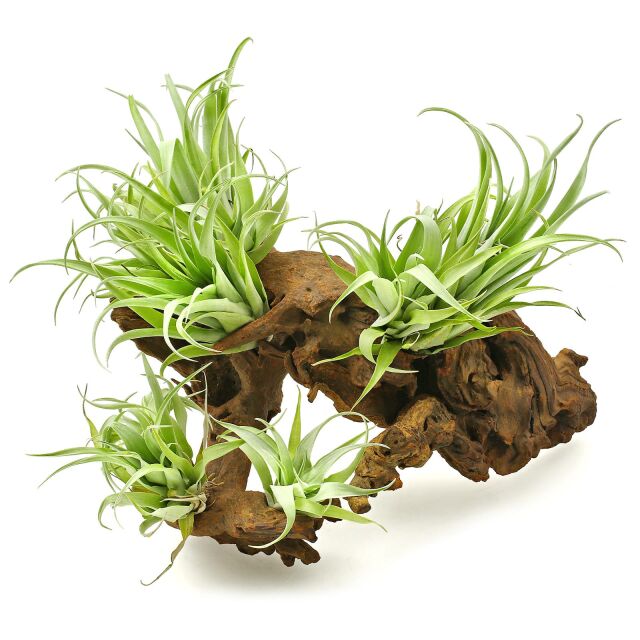Head-forming air plant "Duda"





Tillandsia capitata "Duda"
Head-forming air plant "Duda"
- Epiphyte from Mexico and Guatemala
- Special selection
- For desert or steppe terrariums
Item question
We’re here for you!
Please enter your question and e-mail and we’ll contact you as soon as possible. It usually takes us up to 24 hours during business days to respond.
Thank you for your question!
Thank you, we’ll get in touch!
Close window
You already sent us a question.
Please wait a few minutes
Description
Tillandsia capitata "Duda" is a special selection of Tillandsia capitata which is native to Mexico, Guatemala and Honduras as well Cuba and Hispaniola. It is often found there as an epiphyte on trees and other woody plants. In the flowering season (June - August) it bears light purple tubular flowers arranged in heads. The grey-green leaves can also turn bright red in good light.
T. capitata "Duda" is counted among the "grey tillandsia" type. They usually come from drier, more exposed places than the so-called Green Tillandsia such as treetops, dry forests or even deserts with a lot of fog. These atmospheric plants absorb water and nutrients from rain, mist and dust completely via the many absorbent scales on the leaves. The roots, if still present, serve as adhesive roots. In culture, such tillandsias are tied or glued to solid materials such as wood or stones. The species prefers a very light, airy place. Spray the plants about two to three times a week with soft water dripping wet. Dipping is also possible. After watering, the plant should be allowed to dry off. Ideally, an orchid and Tillandsia fertiliser should be added every second watering during spring and summer.
As with almost all Tillandsia species, T. capitata "Duda" also forms several pups at its base after bloom.
These can be carefully separated when they reach a size of about one third of the mother plant. If they are not separated, they grow together to form a larger clump.
This quite compact plant grows approx. 5 - 15 cm high. It can be wonderfully integrated into a small or medium-sized desert or steppe terrarium.
Profile
| Tillandsia capitata "Duda" | |
| Cultivation options | Epiphytic (tying on, sticking) |
| Growth height | approx. 5 - 15 cm |
| Temperature | approx. 20 - 27 °C |
| Humidity | approx. 60 % |
| Light requirement | Bright to sunny, no direct sun at noon |
| Watering | Depending on location, in summer spray daily with lime-free water dripping wet, in winter 1 - 2 x per week |
| Fertilising | In spring and summer, with every second watering, orchid or Tillandsia fertiliser |
| Propagation | Formation of pups after blooming |
| Suitable for | Desert and dry terrariums |
| Other | Flower: Light purple to blue, funnel-shaped flowers |
| Cultivation options |
| Epiphytic (tying on, sticking) |
| Growth height |
| approx. 5 - 15 cm |
| Temperature |
| approx. 20 - 27 °C |
| Humidity |
| approx. 60 % |
| Light requirement |
| Bright to sunny, no direct sun at noon |
| Watering |
| Depending on location, in summer spray daily with lime-free water dripping wet, in winter 1 - 2 times per week |
| Fertilising |
| In spring and summer, with every second watering, orchid or Tillandsia fertiliser |
| Propagation |
| Formation of pups after blooming |
| Suitable for |
| Desert and dry terrariums |
| Other |
| Flower: Light purple to blue, funnel-shaped flowers |
Terrarienpflanzen
Our terrarium plants give every terrarium an individual, natural atmosphere and at the same time provide a healthy environment for all terrarium inhabitants. Our wide range of tropical, subtropical and even arid plants are easy to combine and enhance any terrascape. Whether it's strong succulents, subtle tillandsias, eye-catching neoregelias or wonderful orchids - we offer terrarium plants for different terrascapes from rainforest to desert.
General information
Please choose a variant to see more information.
| Item no. |
|
| EAN | |
| Weight | |
| Shipping weight |
Customers ask customers
You have questions about this product? Ask other customer or our support team about this product!